In 1903, the world would never be the same again when Henry Ford established the Ford Motor Company. Born
in Dearborn, Michigan, Ford Motor Company set out with a vision to change the landscape on
the mobility of how humanity would interact, connect, and converse with one another. Henry set out to
revolutionize the entire American landscape and put the world on wheels. At an early age, he was always
tinkered with anything mechanical he could get his hands on by taking it apart and putting it back
together. These first lessons learned in his boyhood years set the foundation to start an industry of
innovation and revolutionized not only the way Americans traveled but change how an entire country runs
its economy. During his youth years in 1896, he built the first-ever quadricycle with a four-horsepower
engine with only two forward gears. Combining his love for everything mechanical, performance, and
innovation, Henry set out to take his passion to some of the first automobile races in the United
States. Following the quadricycle's engineering achievement, Ford set out to compete and build the very first
Ford racer in 1901. With a 26 horsepower engine, nimble chassis, and Henry's unwavering confidence, he
competed in his first race on the Detroit Driving Club. Competing against one of the nation's top racers
in Alexander Winton, Ford had his work cut out for him going up against the 70 horsepower Bullet in the
ten-lap race. Luckily, Henry knew he had the advantage due to his design, engineering, and mechanical
background expertise. Notably, these characteristics lead to a triumphant win over Winton, which set him
off at his second attempt at building an automotive manufacturer, which became the Henry Ford Company.
Shortly
after that, Ford Motor Company would be trademarked and officially incorporated in 1903. The Ford GT brought everything that Henry Ford envisioned to the fullest on what an all-American racing
car could become and challenge the world's status quo. By the end of this guide, you will understand how
influential the Ford GT came to be not just in the racing world but the entire automotive landscape for
generations to follow after the 1960s.
Dethrowning Ferrari
The Pace Car For An Entire Company
Repeating History
Revolutionizing An American Icon
The Ultimate Factory Track Weapon
In the 1960s, many variables in the United States progressed on all fronts in the automotive industry and
pop culture. Technology was at an all-time high in innovation and progression in every industry,
especially the racing world. Ford was at a crossroads between developing practical vehicles for the
masses and new ways to invigerate the automotive enthusiast community. During the 60s, baby boomers were
coming into their teenage years and being able to finally drive. Ford knew more attention needed to be
paid
attention to giving the people what they desire and buying into the younger demographic. A few things needed to be understood before getting into the nit and grit of how the Ford GT program
started. First, Ford received a significant overhaul from the top down to provide invigoration and life
into the company.
One of the first things Ford did is bring in Lee Iacocca; he was a young passionate marketing genius who
made colossal noise during his early career throughout the motor city. Henry Ford II thought it would be
best to have some young new blood to reenergize the brand while providing real-world expectations. At
first, there were some major setbacks due to the stigma of mass quantity or passion for every model Ford
built during this era. Secondly, Iacocca had to convince the board of directors, including Leo Bebe and
the head man himself, that Ford must go back to its racing roots. Next, he proposes a deal which would
result in an auotmotive rivalry between
two manufacturers that remains to this very day. Lee presented to the Ford board of directors that
Ferrari had been making headlines worldwide in racing and the sports car market. He knew that they had
to get back in the saddle on the racetrack and perform with sales in the showroom for Ford to compete
worldwide. At the time, Ferrari was inches from complete bankruptcy, and they needed capital to keep their operation
going at full capacity. Iacocca convinced Henry Ford II that Ford and Ferrari could make a deal that
would benefit both parties while giving Ford the advantage of getting back into racing in the United
States and worldwide. Enzo took the bait and said to Henry, we have a deal; after that, Ford executives
and Lee Iacocca flew to Maranello, Italy, where they would meet face to face. Upon arrival, they
received a full tour of the Ferrari facility, including engine building, production, and the racing
department. Shortly after that, the Ford team would sit down with Enzo Ferrari to go over the deal's
final terms. Finally, after the terms were discussed and Ferrari himself, looked over everything, a clause within the
contract stated that all motorsports and racing operations would be controlled by over 90 percent of
Ford ownership. Enzo was outraged and walked right out on Lee Iacocca and telling Lee along with the
executives to inform Henry Ford II "he makes ugly cars, in ugly factories, and called the head man fat".
Once Iacocca returned to Dearborn, Henry became outraged at what happened and how the Italian slipped
through his fingers. At first, he was outraged as can be, but after that, he said I want the best
engineers,
race car drivers, and designers no matter the cost, to develop the most significant American race car
the world has ever seen. Proceeding after these events, Iacocca went right to work, putting everything into action to execute the
plan needed to take down Ferrari at the 24 Hours of Le Mans. His first step was to gather up the dream
team of engineers, racers, and designers to develop a racer that could go toe to toe with Ferrari.
Fortunately, for Lee and the Ford team, the only man in U.S. history to race and win the 24 Hours Of Le
Mans was no other than the legend himself, Carroll Shelby. Over the years, Shelby became very famous
throughout the American automotive industry due to his impeccable racing career, gifted innovation, and
savvy ability to take an automobile from a standard daily to a full-on sports car. During this time, Ford didn't have a dedicated racing division, and Iacocca was solely responsible for
building Ford's racing program. Luckily, within recent years the relationship between Ford and Shelby
had already been ongoing. Shelby established Shelby American Inc. Taking a British body and chassis from
A/C
while putting in a high output 289 cubic inch motor with nimble suspension came to be the Shelby Cobra.
It is no wonder why Lee came back to Shelby to ask him what it would take to build the most incredible
racecar the world has ever seen? Shelby's answer, "money can't just buy you speed; you have to have the
right talent behind the wheel and a team to ensure your racer can make all twenty-four hours of the
race." Not long after that, the Ford Mustang launched on April 17, 1964 alongside the development of the Ford GT
with Ford Motorsport, Shelby, and Ken Miles. They
continually tested the limits of what Ford engineers from both the British and American divisions had
initially come up with.
They noticed that the body on the GT would have a severe aerodynamic lift and not enough downforce while
the 289
cubic inch V8 didn't produce the power it needed to get it around the track faster than the Ferrari.
After
troubleshooting, they headed into the 1965 season racing season. Ford, Shelby, and the entire team that
developed the GT would come to find a tremendous amount of hardship with the first iteration GT, during
the first race season. The faults for these setbacks included how the original GT would overheat over
boiling
point during hard acceleration, take on tremendous brake fade, and issues of the racecar still lifting
under high speed down the straightaway due to the aerodynamic coefficiency. While heading into the end
of the season at Le Man, the team was confident they had solved many issues to have a chance to finish
the race. Unfortunately, it did not result in the GT even finishing the race, and once again, Ferrari
went
on to win another 24 Hours of Le Mans. Right after the 1965 season, Shelby and the entire Ford engineering team went back to the drawing board
to fix and solve every issue the first iteration GT was prone to. To do this, the team came up
with the Ford GT40 Mark II, a complete overhaul and progression from the original GT design.
Designers brought
the roofline even lower for better aerodynamics, resulting in a 40-inch tall roofline from the ground
up; hence the name GT40. To push the GT40 even further, drivetrain engineers introduced the GT40 to the
"Beast" 427 Cubic Inch V8 pulled straight from a NASCAR racecar and stuffed it into the GT's chassis.
Producing almost 500 naturally aspirated horsepower and a redline of 7,000 RPM, it was the most powerful
engine anywhere in the world at that time. Word spreaded quickly around the racing community, eventually
spreading to Enzo Ferrari himself, where he became worrisome about the immense speed that the GT40 could
produce over 200 MPH to exact. Ensuring the GT stayed planted, vehicle dynamics worked on getting the GT
to stay planted to the ground using better drag coefficiency, downforce, and airflow throughout the
body. Hopes and spirits were high for the entire team as they headed into the 1966 racing season. With Ken
Miles at the driver's seat of the number 98 Ford GT40 Mark II, all bets were on the Ford team to take it
straight to Ferrari to prove once and for all who the real racers and manufacturers are! To prove that
Miles was the best racer to get the job done at Le Mans, Shelby made a deal with Henry Ford II, that if
Ken didn't win at Daytona, he would receive full ownership of all stocks, assets, patents, and rights to
Shelby American. Luckily for Shelby, Ken Miles was a phenominal driver at every level, so as you might
think, he brought home the win at Daytona with ease. Following the Daytona win, all bets were off as the team entered three GT40's into the 24 Hours Of Le
Mans in France. Tensions were sky-high between Ford and Ferrari as they were about to duke it out for
bragging rights and to settle a score once and for all. American vs. Italian engineering and expertise
at
the limits of what the times could develop. Finally, when it was all said and done, Ford destroyed
Ferrari at their game, finishing in the most epic way possible in a 1, 2, and 3 finish together.
Crushing Ferrari was a milestone that Shelby and Ford rejoiced together with ease. All the tremendous
blood,
sweat, passion, and tears finally paid off as they dethroned the prancing horse from its thrown, which
took the automotive and racing world by storm. To this very day, it is held as the most outstanding
racing achievement in the history of automotive and racing culture. From there on, Ford would win three
more 24 Hours Of Le Mans, winning back to back a total of four times and launching a legacy of Ford
Performance that would stand the test of to this very day! After the immense historic success that Henry Ford II, Carroll Shelby, Leo Bebe, Ken Miles, and Lee
Iacocca
put together during the 1960s to turn the tide of endurance racing, motorsports, and automotive
engineering. They would never race the Ford GT40 again or build one from that point on, and who could
blame them after that kind of success on the track. Luckily for Ford, they still ensured they had a
relationship with Shelby to aid turning the Mustang into the most formidable muscle car on the street or
track. Doing just that, he was able to make the 1965-1970 Mustangs into the most vicious snakes on the
block, developing the Shelby GT350, GT500, and GT350R during those years,
cementing his legacy with Ford for all time to come. Fast-forward to the turn of the century, wherein approximately 2002; Ford Motor Company was approaching
its centennial birthday. At the time, Ford Racing knew it had to bring out all the stops to
celebrate the miraculous success Ford has achieved in 100 years of automotive brilliance and building
the foundation for an entire industry. In 2003 at the Detroit International Autoshow, Bill Ford himself
debuted the GT40 concept car to celebrate the 100th birthday of Ford Motor Company. At first glance, the
modern interpretation of the GT40 concept takes direct cues and body lines from the original 1966 Ford
GT40 with the low profile roof, large front air intake openings, wide stance, and racing stripes. During
the GT40 concept announcement, Bill Ford mentioned it could go into
production, but with no concrete plans are in effect as of yet. Enthusiasts and fans alike were hopeful
plans were in motion to make it to full production. A few short years later, in 2004, Ford announced it would be debuting a road-going version that any
customer could buy as a 2005 model. Building upon the 1966 Ford GT40's immense legacy, the all-new GT
would follow the same formula, and DNA Ford injected into the original. With modern technology and
engineering, top Ford engineers ensured the GT had to be absolute perfection in every way to ensure it
was the best supercar in the marketplace. Ford executives and engineers made it clear to benchmark it
against the best of what Ferrari had to offer at the time in the Ferrari 360. Starting with an
all-aluminum extruded space frame, Ford engineers wanted to ensure that the GT was light in every way,
coming in at just under 3,500 pounds made it one of the lightest supercars on the market. Building upon its lightweight chassis and body, engineers and designers went to work to ensure every area
on the 2005 Ford GT had the best of everything. Ford reached out to various racing manufacturers and
suppliers to be apart of the GT program. Ford went to BBS Wheels to equip the GT with forged aluminum
alloy wheels and used Goodyear for their Eagle F1 Supercar tires with 235/45Z18 front and rear
315/40ZR19 to get maximum traction at all four corners to be able to handle the power of the GT. At the
heart of the GT is the monstrous engine, unlike any production Ford has ever seen. Using a first-ever
all-aluminum
5.4L 32V Supercharged V8 produced a whopping 550 horsepower and 500 lb/ft of torque, pushing the GT to
sixty miles per hour in just 3.7 seconds and blasting the GT to a mind-blowing top speed of 205 MPH,
making it the fastest supercar in the world at that time. Even faster than the Porsche Carerra GT
and Mercedes-Benz Mclaren SLR, which were three times as expensive. This GT culminated the most prolific American supercar in history at that time and was able to go toe to
toe with the likes of anything Europe could throw at it. The 2005-2006 Ford GT brought the hundredth
anniversary of Ford Motor Company with a triumphant celebration to show the world once again that Ford
was founded on motorsports and racing at its most grassroots form! Leading up to the 2016 racing season, Ford knew their 50th anniversary of the historic 1, 2 and 3 finish
at the 24 Hours Of Le Mans was approaching quickly. Luckily, Ford Performance was
recently established
in 2014, bringing SVT (Special Vehicle Team) and Ford Racing together as one department to build
designated performance vehicles and racing programs. Ford is a nostalgic company, so any chance they can
put a plan together to celebrate history is something they will do time and time again. Just as built
the 2005-2006 Ford GT to commemorate the centennial anniversary of the companies founding, Ford was set
on track to celebrate another momentous occasion of the historic win at Le Mans fifty years ago. Fast-forward to 2015, where the entire Ford Performance team was on complete lockdown and classification
for the project they were working on in Ford's product development skunkworks. Only a handful of
specifically chosen designers, engineers, and individuals of Ford executive team knew what was going on.
Through months and months of hard work, deliberation, and the help of Multimatic, Chip Ganassi Racing,
modern materials and technology,
Ford worked on the third-generation GT right under every enthusiast's foot. As they did fifty years ago,
Ford ensured the first thing they wanted to do with this all-new GT is go racing and then a build
street car second. To do this, it was exceedingly challenging because the 50th anniversary of the legendary 24 Hours Of Le
Mans
win was approaching fast. IMSA (International Motor Sports Association) is the sanctioning body that
determines the rules and the regulations by which the GT has to abide to participate in the 24 Hours Of
Le Mans. They require every GTE Pro class vehicle to have at least 100 homologation vehicles that
consumers
can buy first before the all-new GT racecar can participate in the class of racing. Over the years,
these rules have changed
since Ford's last time was at Le Mans in 1969. Fortunately, we're talking about Ford Motor Company, and
nothing is impossible to build or create from the ground up in terms of a racecar. Debuting in 2016, during the North American International Auto Show in Detroit, Michigan, at the COBO
Center. Bill Ford and Mark Fields displayed and discussed various vehicles where out of nowhere, they
blasted the all-new Ford GT on the scene alongside the sanctioned and purpose-built race car. The
initial shock from the entire automotive world was incredible; everyone who knows the story of Ford Vs.
Ferrari knows that this is a tumultuous occasion for all enthusiasts despite what your favorite
manufacturer is. Bill Ford himself announced that they would be going back to Le Mans for the next four
years to retain the title of king at the harshest endurance race on the planet in the 24 Hours Of Le
Mans. Among the GT's pack of siblings is the number sixty-eight GT. During the beginning of the 24 hours it had
some trouble keeping pace with the group while the
other GT's took it to the competition. As the late-night hours rolled in, it was a battle between no
further than Fords arch-rival Ferrari. Leading into the morning and afternoon, the number #68 Ford GT
and
Joey Hand would be battling the fierce Ferarri 458 Speciale GTR for position lap after lap. Both pushed
the limits of their racecars limits and driving to eleven, while resembling the racing battles that
happened
50 years to the date. As the remaining hours of the 24 hours counted down to the wire, Ford and Ferrari
were neck and neck to grab first place in the GTE Pro class. Charging down to the race's final laps with
only so hours
left on the clock, Joey Hand kicked it into overdrive to ensure that Ferrari wasn't going to take the
victory away
from him and Ford. In some of the last laps heading into sweeping corners, Hand had a few
tricks up his sleeve, which fooled the Ferrari, resulting in him spinning out in the gravel off track,
sealing the victory for the Ford at the 24 Hours Of Le Mans! It resulted in a historic 2016 Le Mans victory for Ford Motor Company, Ford Performance, Chip Ganassi
Racing, and the entire Ford Family. Who could of thought on the first time out in the all-new GT
racecar, it would repeat
history fifty years later as did its ancestor did in 1966. As the saying goes, history does tend to
repeat itself! This win cemented the continued work and legacy for Ford Motor Company as the premier
American manufacturer to go racing while building anything from daily drivers, pickup trucks, SUV's, and
everyday vehicles. After the tremendous fiftieth-anniversary win at Le Mans in 2016. Ford Performance
continued to race on and build upon the successes of their labor. Like the 2005-2006 Ford GT, the 2016
Ford GT is the culmination of every ounce of design and engineering that Ford has ever done. With modern
technology, engineering, materials, and racing experience, Ford Performance engineers when to work to
build a revolutionized GT that would have a balance of form and function, unlike any other Ford vehicle
before it. Designers used a similar design from the first two GT generations but focused on the most
aerodynamic shape to maximize airflow and drag coefficiency. To achieve this philosophy of form and function at its highest level, Ford turned to its friend and
partner in Multimatic to help them develop a carbon fiber monocoque that would put the center of gravity
as low
as possible in the GT. Furthermore, building a chassis to handle the first-ever EcoBoost 3.5L Twin-Turbo
V6 engine and the amount of downforce the GT would be charged with handling was crucially important to
the success of carving out incredible lap times, zero to sixty, and top speed. Like the
second-generation
GT, the third generation uses a highly developed aluminum space frame that interconnects with the carbon
fiber
monocoque creating a structural rigidity, unlike any other American supercar in modern times. Ford
Performance and Multimatic didn't just stop there; they integrated a fully certified FIA legal roll cage
that intertwined into the chassis and carbon fiber in case of rollovers on track. Taking lessons learned from the 2005-2006 Ford GT, the 2016-2021 GT has a different philosophy in
creating the most significant driving experience imaginable, using materials and processes such as
carbon fiber, lightweight aluminum, and aerodynamics to create its speed over brute muscle. The
third-generation GT is based solely on form
and function in every way. For example, one of the most significant design features on the GT is the
flying buttress. This unique body panel connects the roof and the quarter panel together to create a
vortex of
air that passes through unchallenged from any other body panel while doubling as an air intake to the
engine,
radiators, and intercoolers. When it comes to powertrain and the Ford GT, every enthusiast or automotive connoisseur thinks of a great
big American V8. That is very true for the original 1966 Ford GT MK II and the 2005-2006 Ford GT. Only
this time, Ford was thinking about weight and efficiency at every level. To do this, they had to turn to
smaller displacement and forced induction to achieve their goal. At first, Ford Performance engineers
did not want to go off the Ford GT's DNA of a large displacement all-American V8. Unfortunately, Ford
went away from the traditional GT DNA in opting for an EcoBoost engine to maximize power to weight
ratios. It would enable Ford Performance engineers to get the most horsepower but without sacrificing
weight. Like any EcoBoost, they have proved over many years throughout the Ford vehicle lineup,
especially
the F-150. Using forced induction, fuel mapping, larger turbochargers, and modern engine technology,
Ford Performance
engineers pushed the limits on what the 3.5L EcoBoost V6 could become. The GT's EcoBoost uses larger turbos, enhanced tuning, fuel mapping, induction solutions, and a anti-lag
system to
spool up the turbos faster for optimal performance.
Roush-Yates and Ford Performance worked together to produce 647 horsepower at 6,250 RPM and 550 lb/ft of
torque at 5,900 RPM resulting in the most powerful production Ford GT ever. Ford used a first-ever
dual-clutch 7-speed transmission to get the GT's power to the ground as effectively. What is
mind blowing is that can shift in less than 80
milliseconds instantaneously. Giving enthusiasts and owners the ability to have any gear at any RPM on
demand, whether you're cruising around town or going full send out on track, it is the most
efficient way to maximize putting power to the ground. Bringing it all together and making the GT the best handling American supercar ever to hit American
roads, Ford
went an entirely new route with the suspension. Ford Performance developed a double-wishbone suspension
on all four corners to ensure maximum grip while entering and existing corners with the proper balance
of
power coming from the EcoBoost engine. Within the GT, a series of vehicle modes will determine the car's
behavior; these are normal, sport, sport plus, track, and v-max, each are for different purposes and
driving scenarios. The two most notable are track and v-max, where the 2016-2021 Ford GT is different
than any
other supercar is the ability to drop its suspension ride height on the fly by 2.75 inches. You're
probably asking yourself how does it do that? It is quite simple, by using Multimatic DSSV dampers
at all four
corners, the GT can hydraulically disengage its torsion bars on demand. This replaces the traditional
coil
spring for optimal traction and steering input. Allowing the GT to gain maximum leverage of its
aerodynamics, power to weight ratio, and
handling. Adding to its already sophisticated engineering, suspension, and powertrain. The GT goes a step further
with an active spoiler, Brembo carbon fiber rotors, six-piston front brake calipers, four piston rear
brake calipers, and
dual exhaust. Bringing all of these variables and components together made for Ford Motor Company's most
significant performance vehicle in history. Unfortunately, you'll be lucky to get your
hands one because they are all sold out and requires applying to purchase. Used ones are selling for
well
over a $1,000,000 price tag in today's market. If you thought the standard third-generation GT was insane, you haven't seen anything yet! During the
summer of 2019, Ford dropped a bombshell on the automotive world in the Ford GT MKII. This all-new
version of the
MKII would use direct lineage to the original 1966 Ford GT MKII in which won the '66 24 Hours of Le
Mans. Building upon
the already potent street-legal GT, the MKII turns every aspect of the third generation GT to eleven.
Again
partnering with Multmatic Racing to develop the MKII, Ford Performance would ensure that this is the
most capable and track-worthy factory built GT in Ford Motor Company history. Using a derived version of the 3.5L EcoBoost Twin Turbo V6, race-proven aerodynamic properties,
competition handling, and integrating the lessons learned from the last four years of racing around the
IMSA circuit and FIA World Endurance Championship, the GT MKII is set to be the most prolific of any
purpose-built American track vehicles ever. The MKII produces a staggering 700 horsepower, 53 more than
the road-going version, turning up the boost, timing, and more significant fuel mapping. Without limits,
rules or regulations from FIA or IMSA. The GT Mark II can produce the very best of what Ford Performance
and Multimatics Racing
capabilities are at full tilt. The 2019 Ford GT MKII was purpose-built to slay any road course or track anywhere. It
features fixed aerodynamics and engine improvements that are track-proven through the world's
most challenging endurance racing events. Key features include a large fixed rear wing, massive front
splitter, canards, more aggressive rear diffuser, and incorporating new fender louvers with dive planes
that help balance out the extra rear downforce. Combining all these fixed aerodynamic properties allows
for over 400 percent more downforce than road-going GT. Adding Michelin Pilot Sport slick racing tires
and race has proven
suspension in Multimatic DSSV 5-way adjustable shocks. It gives the GT MKII more than 2Gs of
lateral grip making for a lighter and more agile GT. Unlike the regular road-going GT, this will be a minimal run of only 45 units over a four year period. It
will be an exclusive club to be able to get your hands on one of these bad boys and you better ought to
have deep pockets at a staggering $1,200,000 price tag. While the rule is, you must already have owned a
regular street Ford GT supercar. Culminating it all together, the Ford GT MKII is the most
outstanding achievement besides the win at Le Mans in 2016 that Ford done modern times. It indeed shows
the
passion, drive, and commitment in which Ford Performance, Ford Motor Company, and Multimatic have to
create the envy of any American manufacturer! Image Credit: Ford Motor Company, Ford Performance, Motor 1, Wes
Duenkel, Mecum AuctionWhat Is A Ford GT?


Dethrowning Ferrari
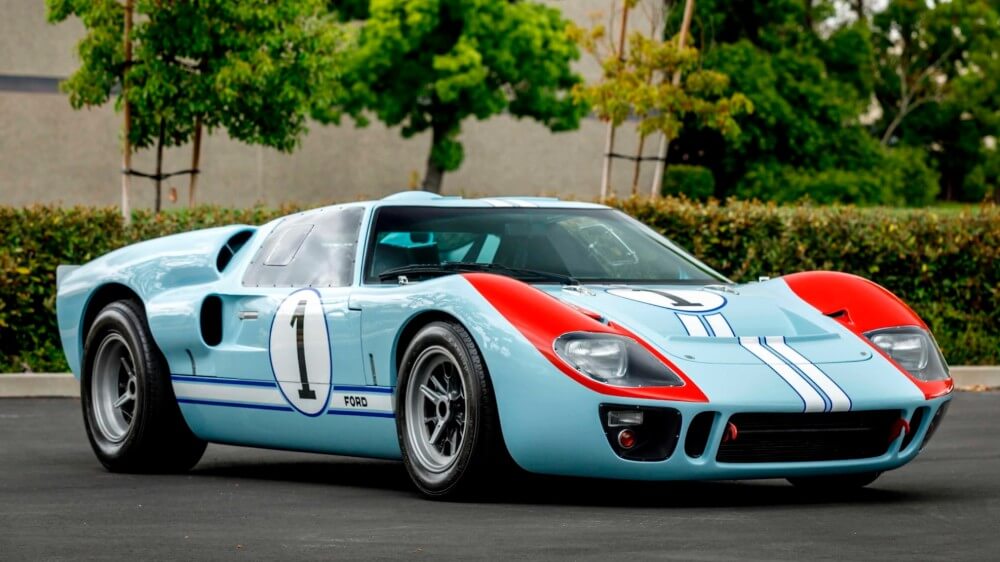

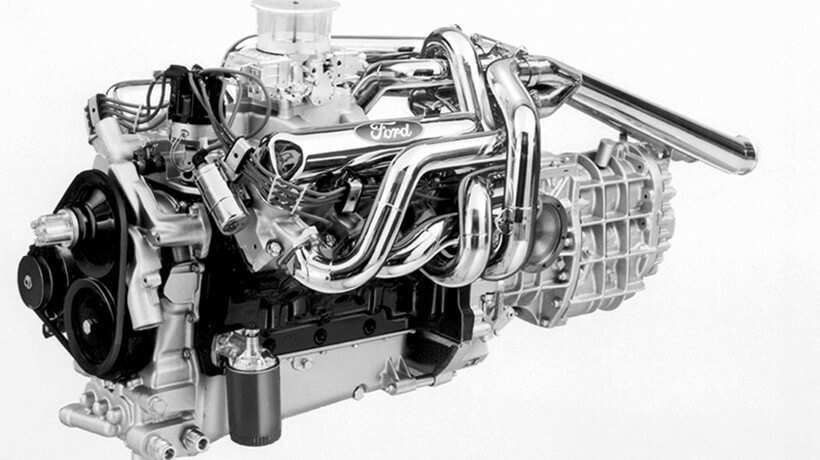
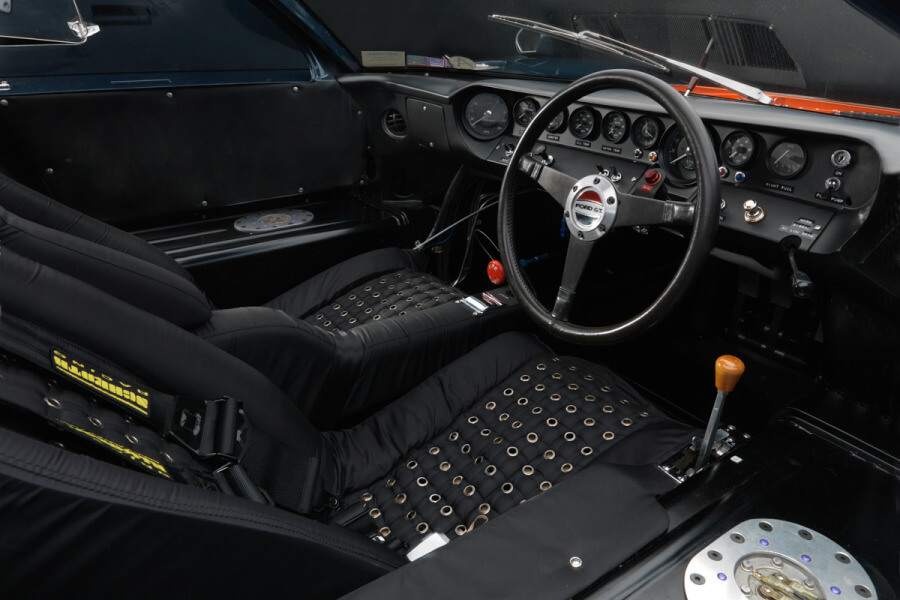
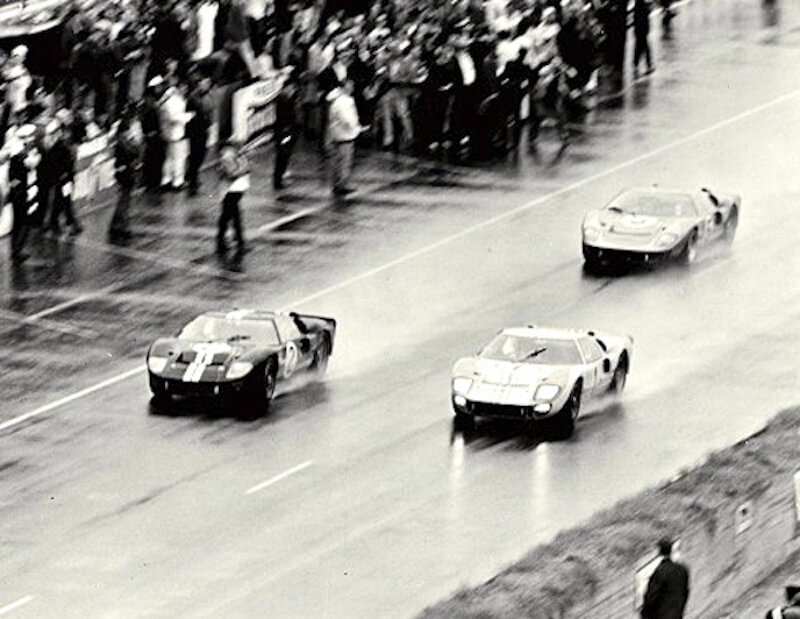

The Pace Car For An Entire Company


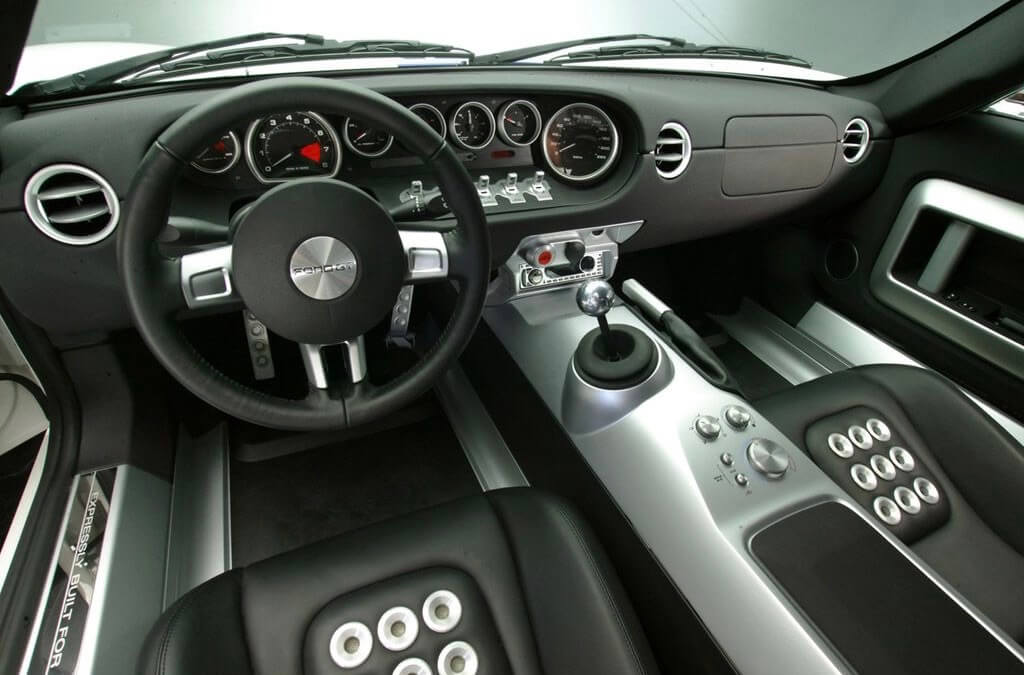

Repeating History



Revolutionizing An American Icon

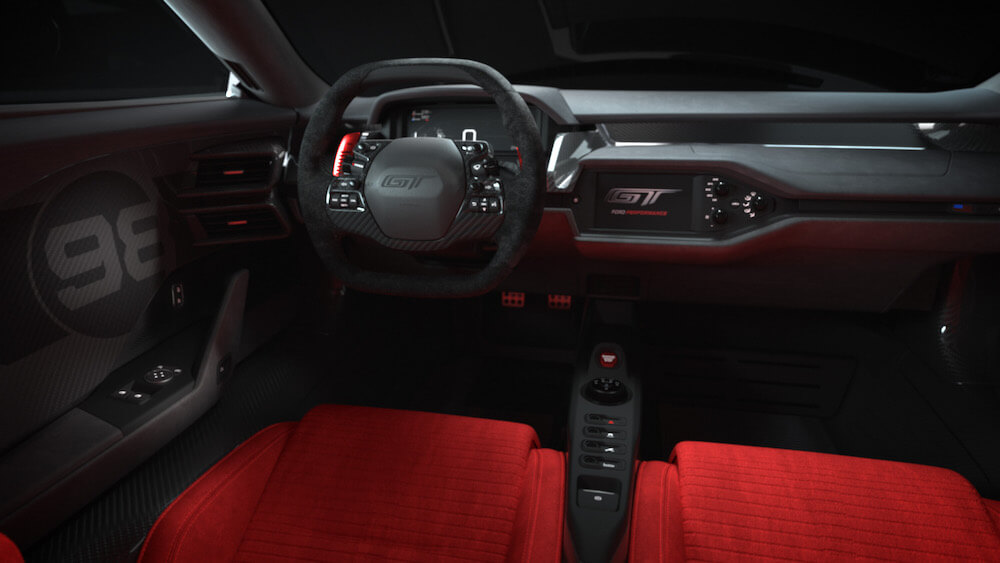

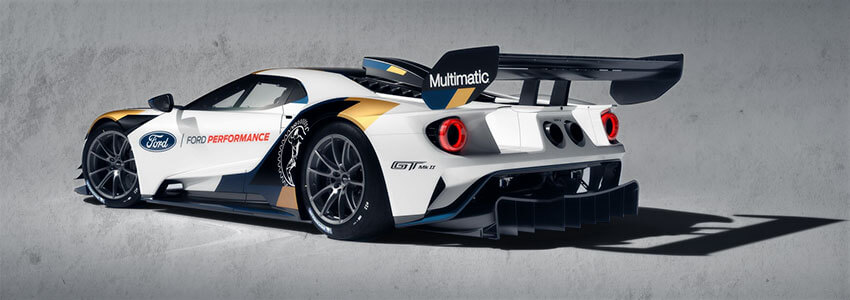
The Ultimate Factory Track Weapon


Related Articles





